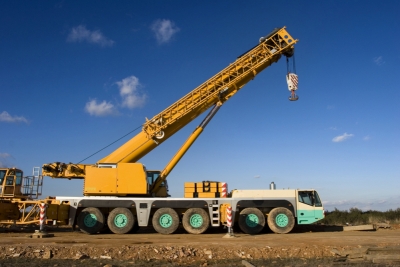
Cranes combine simple machines to lift extremely heavy objects. In balance-style cranes, the crane’s beam is balanced at a point, called the fulcrum. This allows it to lift heavy objects with a relatively small force. In this way, the crane’s beam acts as a simple lever. Cranes also make use of the pulley, another simple machine. Tower cranes often have more than one pulley. This helps it multiply its force to lift heavy objects.
Cranes exist in an enormous variety of forms, each tailored to a specific use. Sizes range from the smallest jib cranes, used inside workshops, to the tallest tower cranes, used for constructing high buildings. Mini-cranes are also used for constructing high buildings, in order to facilitate constructions by reaching tight spaces. Finally, we can find larger floating cranes, generally used to build oil rigs and salvage sunken ships.
Some lifting machines do not strictly fit the above definition of a crane, but are generally known as cranes, such as stacker cranes and loader cranes.
Picture Credit : Google

